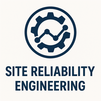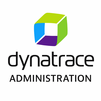
The AWS Solution Architect - Associate Level training course provides comprehensive instruction on designing scalable, cost-effective, and secure applications on AWS. It covers essential services like EC2, S3, VPC, and RDS, along with best practices for deployment, management, and troubleshooting. Ideal for IT professionals aiming to enhance their cloud architecture skills, this course includes real-world scenarios, and exam preparation resources to ensure readiness for the AWS Certified Solutions Architect Associate exam.
AWS Solution Architect Associate Level Interview Questions Answers - For Intermediate
1. What is AWS?
AWS (Amazon Web Services) is a cloud computing platform provided by Amazon that offers a wide range of services, including computing power, storage, databases, and more, over the internet.
2. What is IAM in AWS?
IAM (Identity and Access Management) is a service that helps you securely control access to AWS resources by managing users, groups, roles, and permissions.
3. What is EC2?
EC2 (Elastic Compute Cloud) is a web service that provides resizable compute capacity in the cloud. It allows users to rent virtual servers (instances) and run applications on them.
4. What is S3?
S3 (Simple Storage Service) is an object storage service that allows users to store and retrieve data from anywhere on the web. It is highly scalable, reliable, and secure.
5. What is VPC?
VPC (Virtual Private Cloud) is a virtual network that you can create in AWS. It allows you to control your virtual networking environment, including IP address ranges, subnets, route tables, and network gateways.
6. What is a Load Balancer in AWS?
A load balancer distributes incoming traffic across multiple targets (such as EC2 instances) to ensure high availability and fault tolerance of your applications.
7. What is Auto Scaling?
Auto Scaling automatically adjusts the number of EC2 instances in a group based on demand or a defined schedule. It helps maintain application availability and optimize cost.
8. What is RDS?
RDS (Relational Database Service) is a managed database service that makes it easy to set up, operate, and scale relational databases in the cloud.
9. What is CloudFormation?
CloudFormation is a service that allows you to create and manage AWS resources using templates. It enables infrastructure as code, making it easier to provision and manage resources.
10. What is Route 53?
Route 53 is a scalable and highly available domain name system (DNS) web service provided by AWS. It helps route end users to internet applications by translating domain names into IP addresses.
11. What is Lambda?
Lambda is a serverless computing service that allows you to run code without provisioning or managing servers. You can upload your code and Lambda automatically scales and executes it in response to triggers.
12. What is CloudWatch?
CloudWatch is a monitoring and observability service that provides metrics, logs, and alarms for AWS resources and applications. It helps you monitor performance, troubleshoot issues, and take automated actions.
13. What is SNS?
SNS (Simple Notification Service) is a fully managed messaging service that enables you to send notifications to distributed systems, microservices, and mobile devices.
14. What is SQS?
SQS (Simple Queue Service) is a fully managed message queuing service that enables you to decouple and scale microservices, distributed systems, and serverless applications.
15. What is ECS?
ECS (Elastic Container Service) is a fully managed container orchestration service that allows you to run, stop, and manage Docker containers on a cluster of EC2 instances.
16. What is EBS?
EBS (Elastic Block Store) is a high-performance block storage service provided by AWS for use with EC2 instances. It allows you to create and attach persistent block storage volumes to EC2 instances.
17. What is CloudFront?
CloudFront is a content delivery network (CDN) service provided by AWS. It accelerates the delivery of your website, APIs, video content, and other web assets to users worldwide.
18. What is DynamoDB?
DynamoDB is a fully managed NoSQL database service provided by AWS. It offers fast and predictable performance with seamless scalability for applications requiring single-digit millisecond latency.
19. What is ElastiCache?
ElastiCache is a fully managed in-memory caching service provided by AWS. It supports popular caching engines such as Redis and Memcached, helping improve the performance of your applications.
20. What is AWS CLI?
AWS CLI (Command Line Interface) is a unified tool that allows you to manage your AWS services from the command line. It provides commands for interacting with various AWS services and resources.
AWS Solution Architect Associate Level Interview Questions Answers - For Advanced
1. Explain the concept of eventual consistency in DynamoDB. How does it differ from strong consistency, and when should each be used?
Eventual consistency in DynamoDB means that after an update is made, all copies of the data will eventually reflect the change, but it may take some time. It offers higher availability and performance at the cost of read accuracy immediately after a write operation. In contrast, strong consistency ensures that all copies of the data reflect the change immediately after the update, which guarantees that a subsequent read will return the latest value. Strong consistency is crucial in applications where accuracy is more important than performance, such as financial transactions, while eventual consistency is suitable for applications where performance and scalability are prioritized, like social media feeds.
2. How can you design a highly available architecture in AWS?
A highly available architecture in AWS can be designed by leveraging multiple AWS services and best practices:
- Regions and Availability Zones (AZs): Distribute resources across multiple AZs within a region to protect against failures in a single AZ.
- Elastic Load Balancing (ELB): Distribute incoming traffic across multiple instances or services in different AZs to ensure availability.
- Auto Scaling: Automatically adjust the number of EC2 instances in response to load to maintain performance and availability.
- Multi-AZ Deployments for Databases: Use Amazon RDS Multi-AZ deployments for automatic failover and redundancy.
- S3 Cross-Region Replication: Replicate S3 data across regions for disaster recovery.
- Route 53 DNS Failover: Configure health checks and DNS failover to redirect traffic to healthy resources.
- Backup and Restore: Regularly back up data using AWS Backup and implement a disaster recovery plan.
3. What are the differences between Amazon S3 and Amazon EBS, and when would you use each?
Amazon S3 (Simple Storage Service) and Amazon EBS (Elastic Block Store) are both storage services but serve different purposes:
- Amazon S3: Object storage service designed for high scalability, durability, and availability. It is ideal for storing and retrieving large amounts of unstructured data like images, videos, and backups. S3 supports different storage classes and lifecycle policies, making it cost-effective for various use cases.
- Amazon EBS: Block storage service designed for use with EC2 instances. It provides low-latency performance and is suitable for applications that require persistent storage, such as databases and file systems. EBS volumes can be attached to EC2 instances, allowing fine-grained control over storage and performance. Use S3 for scalable, durable storage of unstructured data and EBS for high-performance block storage needs tied to EC2 instances.
4. How does Amazon RDS handle backup and recovery?
Amazon RDS handles backup and recovery through automated backups and manual snapshots:
- Automated Backups: RDS automatically performs daily backups of the database instance during the backup window and retains transaction logs to enable point-in-time recovery (PITR) within the backup retention period. Automated backups are stored in S3, providing durability and availability.
- Manual Snapshots: Users can create manual snapshots of their RDS instances at any time. These snapshots are stored in S3 and can be used to restore a database to the state at the time the snapshot was taken. Manual snapshots persist until explicitly deleted by the user.
- Restoration: To recover a database, users can restore from either an automated backup or a manual snapshot. The restored database can be created as a new RDS instance, ensuring the original database remains unaffected.
5. What strategies can be employed to ensure the security of data stored in Amazon S3?
Ensuring the security of data stored in Amazon S3 involves several strategies:
- Bucket Policies and IAM Policies: Define and enforce access controls using S3 bucket policies and IAM policies to grant fine-grained permissions.
- Encryption: Use server-side encryption (SSE) with S3-managed keys (SSE-S3), AWS KMS-managed keys (SSE-KMS), or customer-provided keys (SSE-C) to encrypt data at rest. Enable client-side encryption for additional security.
- Access Logging and Monitoring: Enable S3 access logging to track access requests. Use AWS CloudTrail to log API calls and AWS Config to monitor configuration changes.
- Bucket Versioning: Enable versioning to protect against accidental deletions or overwrites.
- Multi-Factor Authentication (MFA): Require MFA for sensitive operations using IAM policies.
- Network Security: Use VPC endpoints to securely connect to S3 without traversing the internet. Implement security groups and NACLs to control network access.
6. How does AWS Lambda integrate with other AWS services, and what are some common use cases?
AWS Lambda integrates seamlessly with many AWS services, enabling serverless architectures. Some common integrations and use cases include:
- API Gateway: Lambda can be triggered by API Gateway to create RESTful APIs without managing servers.
- S3: Lambda can be invoked by S3 events, such as object uploads, to process data in real-time (e.g., image processing, file validation).
- DynamoDB Streams: Lambda can process DynamoDB Streams to handle real-time changes in the database, enabling use cases like data replication and event-driven applications.
- CloudWatch Events and Logs: Lambda can be triggered by CloudWatch Events to respond to system events and by CloudWatch Logs to process log data.
- SNS and SQS: Lambda can be invoked by SNS topics and SQS queues to process messages and build decoupled, event-driven architectures.
- Step Functions: Lambda functions can be orchestrated using AWS Step Functions for complex workflows and stateful applications.
7. Explain how to implement a CI/CD pipeline using AWS CodePipeline, CodeBuild, and CodeDeploy.
Implementing a CI/CD pipeline with AWS CodePipeline, CodeBuild, and CodeDeploy involves the following steps:
- Source Stage: Configure CodePipeline to use a source repository (e.g., GitHub, CodeCommit) as the source stage. This stage detects changes in the repository and triggers the pipeline.
- Build Stage: Add a build stage using AWS CodeBuild. CodeBuild retrieves the source code, runs the build scripts (defined in a buildspec.yml file), and produces build artifacts. CodeBuild can also run tests and static analysis as part of the build process.
- Deploy Stage: Use AWS CodeDeploy in the deploy stage to automate the deployment of the build artifacts to the target environments (e.g., EC2 instances, Lambda functions). CodeDeploy supports various deployment strategies, including in-place and blue/green deployments.
- Pipeline Configuration: Define the pipeline stages and actions in CodePipeline, specifying the input and output artifacts for each stage. Use IAM roles to grant necessary permissions to CodePipeline, CodeBuild, and CodeDeploy.
- Automated Triggers: Configure automated triggers, such as source code commits, to start the pipeline automatically, ensuring continuous integration and delivery.
8. What are the benefits and trade-offs of using AWS Auto Scaling?
AWS Auto Scaling provides several benefits, including:
- Scalability: Automatically adjusts the number of EC2 instances or other resources in response to changes in demand, ensuring applications remain responsive under varying load conditions.
- Cost Efficiency: Optimizes resource utilization by scaling resources up during high demand and scaling down during low demand, reducing costs.
- Availability: Enhances application availability by replacing failed instances and distributing traffic across healthy instances.
- Flexibility: Supports multiple scaling policies, including target tracking, step scaling, and scheduled scaling, to meet specific application needs.
However, there are trade-offs to consider:
- Configuration Complexity: Setting up Auto Scaling requires proper configuration of metrics, thresholds, and policies, which can be complex for sophisticated applications.
- Latency: There may be a delay between detecting the need for scaling and the actual provisioning of new resources, potentially impacting application performance during sudden traffic spikes.
- Cost Management: While Auto Scaling can reduce costs, improper configuration or rapid scaling can lead to unexpected expenses, necessitating careful monitoring and budget management.
9. Describe the differences between horizontal and vertical scaling. Provide examples of when each would be appropriate in AWS.
Horizontal scaling, or scaling out, involves adding more instances of a resource to distribute the load. Examples include adding more EC2 instances to a web server fleet behind an ELB or increasing the number of RDS read replicas to handle more read requests. Horizontal scaling is appropriate for applications designed to run on multiple instances, such as microservices architectures and distributed databases.
Vertical scaling, or scaling up, involves increasing the capacity of a single instance by adding more CPU, memory, or storage. Examples include upgrading an EC2 instance to a larger instance type or increasing the IOPS provisioned for an EBS volume. Vertical scaling is appropriate for applications that benefit from higher single-instance performance, such as single-threaded applications or databases that cannot be easily distributed.
10. How can Amazon CloudFront be used to optimize content delivery, and what are its key features?
Amazon CloudFront is a content delivery network (CDN) that optimizes content delivery by caching content at edge locations worldwide, reducing latency for end-users. Key features of CloudFront include:
- Global Network of Edge Locations: Delivers content from the edge location closest to the user, improving load times and reducing latency.
- Dynamic and Static Content Delivery: Supports caching and delivery of both static content (e.g., images, videos) and dynamic content (e.g., API responses).
- Security Integration: Integrates with AWS Shield and AWS WAF for DDoS protection and web application firewall capabilities. Supports HTTPS to secure data in transit.
- Customizable Caching: Allows fine-grained control over cache behavior using cache policies, origin request policies, and Lambda@Edge for running custom logic at edge locations.
- Scalability and Reliability: Automatically scales to handle varying traffic loads and provides high availability with built-in redundancy.
- Cost Efficiency: Offers pay-as-you-go pricing with no upfront commitments, making it cost-effective for varying usage patterns.
Course Schedule
| Dec, 2025 | Weekdays | Mon-Fri | Enquire Now |
| Weekend | Sat-Sun | Enquire Now | |
| Jan, 2026 | Weekdays | Mon-Fri | Enquire Now |
| Weekend | Sat-Sun | Enquire Now |
Related Courses
Related Articles
Related Interview
- SAP Condition Contract Management Training Interview Questions Answers
- Kronos UKG Interview Questions Answers
- Microsoft 365 Copilot for IT Professional Training Interview Questions Answers
- Piping Engineering Training Interview Questions Answers
- Salesforce System Administrator Training Interview Questions Answers
Related FAQ's
- Instructor-led Live Online Interactive Training
- Project Based Customized Learning
- Fast Track Training Program
- Self-paced learning
- In one-on-one training, you have the flexibility to choose the days, timings, and duration according to your preferences.
- We create a personalized training calendar based on your chosen schedule.
- Complete Live Online Interactive Training of the Course
- After Training Recorded Videos
- Session-wise Learning Material and notes for lifetime
- Practical & Assignments exercises
- Global Course Completion Certificate
- 24x7 after Training Support












 Join our Live Instructor-Led online classes delivered by industry experts
Join our Live Instructor-Led online classes delivered by industry experts